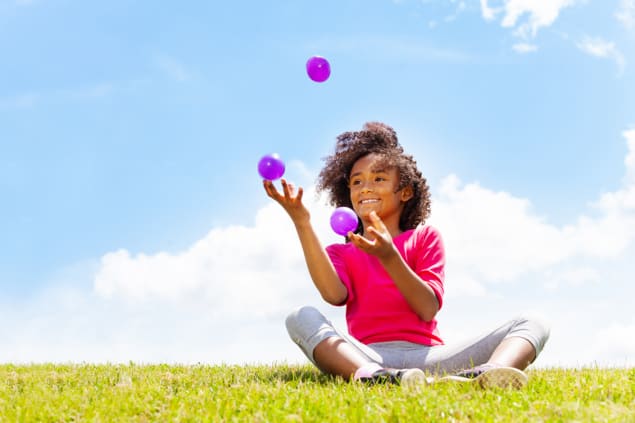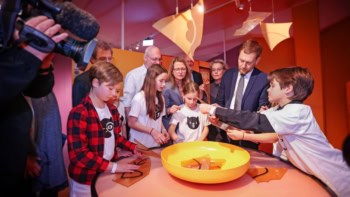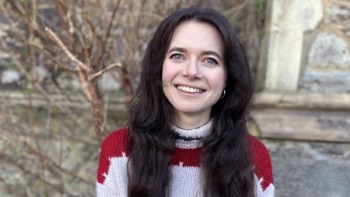Laura Hiscott on learning physics through playful exploration

I remember once while I was at school being asked to fill in a questionnaire in class to discover my personal learning style: visual, auditory or kinaesthetic. That last one sounded exotic, but the teacher told us that it meant you learned best by being physically involved in activities, rather than absorbing information through listening to explanations or watching demonstrations.
Although categories like this can offer useful insights, they have their limitations when it comes to real life. Most students in the class, myself included, turned out to be a little bit of each type of learner. Each academic subject lends itself more to one learning style than another, too. Physics, with its emphasis on what we observe physically happening in the 3D world, probably has more scope for kinaesthetic learning than most subjects.
After all, children are learning kinaesthetically about gravity every time they drop something (or fall over); about friction every time they go down a slide with their shoes on instead of just socks; about circular motion when they feel themselves being pulled to the outside of a spinning roundabout. This is how we first learn about cause and effect, and develop a physical intuition about how objects interact.
Children are learning kinaesthetically about gravity every time they drop something (or fall over)
Using playful exploration to introduce scientific principles is the thinking behind a series of workshops on the physics of circus skills, developed by a Bristol-based theatre group last year. The Oddly Moving Theatre Company teamed up with the Institute of Physics, and the physics-education charity The Ogden Trust, to deliver the workshops to local schoolchildren between the ages of 10 and 14, focusing on three tricks: juggling, spinning plates and diabolo.
Oddly Moving was founded in 2016 by circus and theatre performer Grania Pickard, and creates circus-theatre shows, which combine both art forms. Although circus entertainment has historically involved tamed animals doing various stunts, Oddly Moving takes the more modern approach of showcasing the agility and ingenuity of human performers.
These kinds of circus tricks are a great entry point for sparking curiosity and unlocking new ideas. After all, the tricks are surprising and impressive because they defy our expectations. We know from a young age, perhaps from building towers out of blocks, that it’s very hard to put a larger object on top of a narrow platform without toppling it. This might be described as an intuitive understanding of centre of mass. So it’s surprising to find wide plates balancing with ease atop beanpoles, at least the first time you see it. But, as any physicist will tell you, having your expectations defied is a sign that you’re about to learn something new.
The workshops begin with a member of the theatre group demonstrating one of the circus tricks and teaching the technique, after which a volunteer physicist describes the physical principles behind how it works. For example, they explain how conservation of momentum leads to gyroscopic effects, which stabilize the spinning plates and stop them from falling off the sticks, as you would expect them to do if they were still. The physicist also explores the concept of friction and how the plates gradually lose energy, so need to be sped up occasionally to maintain their balance. After these explanations, the children have the chance to try the trick themselves, getting direct experience of these principles in action.
Sam, a student from the University of Bristol who volunteered to help out with the workshops, says that the children find it harder to grasp some concepts than others. When learning to juggle, they might quickly understand the idea that the force from your hand throws the ball up, but they are often confused by the idea of kinetic energy being converted into gravitational potential energy. Perhaps this is to be expected; potential energy is a much more abstract and less tangible concept, and doesn’t lend itself to being directly experienced, unlike the angular momentum of spinning plates.
After having a go at spinning plates and juggling, the children get to try their hand at diabolo, but this time the physicist doesn’t go through the principles underpinning it first. Instead, after attempting various diabolo tricks, the children are asked to explain the physics involved in this new context. Stability due to the conservation of angular momentum is a key aspect here, as are friction, transfer of energy and centre of mass. Wave motion also crops up, since generating a wave along the string transfers energy to the diabolo to set it spinning.
Sam found that, in general, the children who are most keen on mastering the circus skills tend to also be the ones who are most interested in the physics. Perhaps this is because the more you want to get good at something, the more motivated you are to learn how it works, so you can apply that knowledge when you practise it.
That said, it’s perfectly possible to be a pro at the theory while struggling with the practical side, or vice versa. Sam also noted that he found it both amusing and slightly embarrassing that many of the children were better at – and quicker to learn – the circus skills than he and the other student volunteers were. He found this surprising because he thought his more sophisticated understanding would be a big advantage. Having the theoretical knowledge might give you a leg up in figuring out how to improve your technique, but it’s no guarantee that you’ll pull something off in practice.



